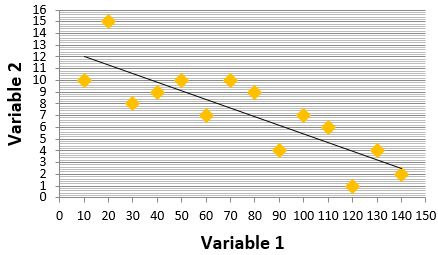Interpretation of the concept of Ashraya - Ashrayi Bhava from Ayurveda with the concept of correlation from Statistics
DOI:
https://doi.org/10.21760/jaims.9.7.28Keywords:
Correlation in Ayurveda, Correlation between Dosha and Dhatu, Bio-StatisticsAbstract
Ayurveda is an ancient science that tells us to maintain a healthy life, along with curing ailments. All medical graduates need to study research methodology and medical statistics to complete the graduation. We need to correlate Ayurvedic terminologies and concept with the modern terms and concepts to conduct research, which will results in the globalization of Ayurveda. Correlation is one of the topics from statistics, and examples along with the same concept are found in Ayurvedic classics. Correlation from biostatistics can be compared with the Ashraya - Ashrayi Bhava from Ayurveda. There is a moderately positive correlation between Pitta Dosha and Rakta, Pitta and Sweda. There is a moderately positive correlation between Kapha Dosha and Rasa Dhatu, Kapha and Mamsa Dhatu, Kapha and Meda Dhatu, Kapha and Majja Dhatu, Kapha and Shukra Dhatu, Kapha and Mutra Mala, Kapha and Purisha Mala. There is a moderately negative correlation between Vata Dosha and Asthi Dhatu, Vata Dosha and Kapha Dosha. This will help research scholars from Ayurveda to write proper words in the research project. Thus, it is concluded that statistical terms and concepts are elaborated in the Ayurvedic classics having almost same meaning, and only the language is different.
Downloads
References
S.C. Gupta, Fundamentals of Statistics, 7th edition, Himalaya Publishing House Pvt. Ltd., Girgaon Mumbai, 2016, 8.1 to 8.6.
C.R. Kothari, Research Methodology Methods and Techniques, 2nd revised edition, New Age International (P) Limited, New Delhi, 2004, 145
Agnivesha, Acharya Charak, Vaidya Yadavaji Acharya, Sootrasthan, Adhyaya 30, Verse 20 – 21, Chaukhambha Publication, New Delhi, Reprint 2020, 186
Agnivesha, Acharya Charak, Vaidya Yadavaji Acharya, Sootrasthan, Adhyaya 30, Verse 27, Chaukhambha Publication, New Delhi, Reprint 2020, 187
K.R. Sundaram, S.N. Dwivedi, V. Sreenivas, Medical Statistics Principles & Methods, 2nd edition, Wolters Kluwer (India) Pvt. Ltd., New Delhi, 2015, 64
K.R. Sundaram, S.N. Dwivedi, V. Sreenivas, Medical Statistics Principles & Methods, 2nd edition, Wolters Kluwer (India) Pvt. Ltd., New Delhi, 2015, 66
Acharya Vagbhata, Dr. Anna Kunte, Ashtangahrudayam, Sootrasthan, Adhyaya 11, Verse 26 to 28, Choukhamba Sanskrit Sansthan, Varanasi, Reprint 2020, 186.
Acharya Vagbhata, Commentary by Arundatta, Dr. Anna Kunte, Ashtangahrudayam, Sootrasthan, Adhyaya 11, Verse 26 to 28, Choukhamba Sanskrit Sansthan, Varanasi, Reprint 2020, 187.
Acharya Vagbhata, Dr. Anna Kunte, Ashtangahrudayam, Nidansthan, Adhyaya 15, Verse 5 & 13, Choukhamba Sanskrit Sansthan, Varanasi, Reprint 2020, 530 & 531.
Acharya Vagbhata, Dr. Anna Kunte, Ashtangahrudayam, Nidansthan, Adhyaya 3, Verse 3, Choukhamba Sanskrit Sansthan, Varanasi, Reprint 2020, 466.
Acharya Vagbhata, Dr. Anna Kunte, Ashtangahrudayam, Nidansthan, Adhyaya 10, Verse 4 and 7, Choukhamba Sanskrit Sansthan, Varanasi, Reprint 2020, 502.















